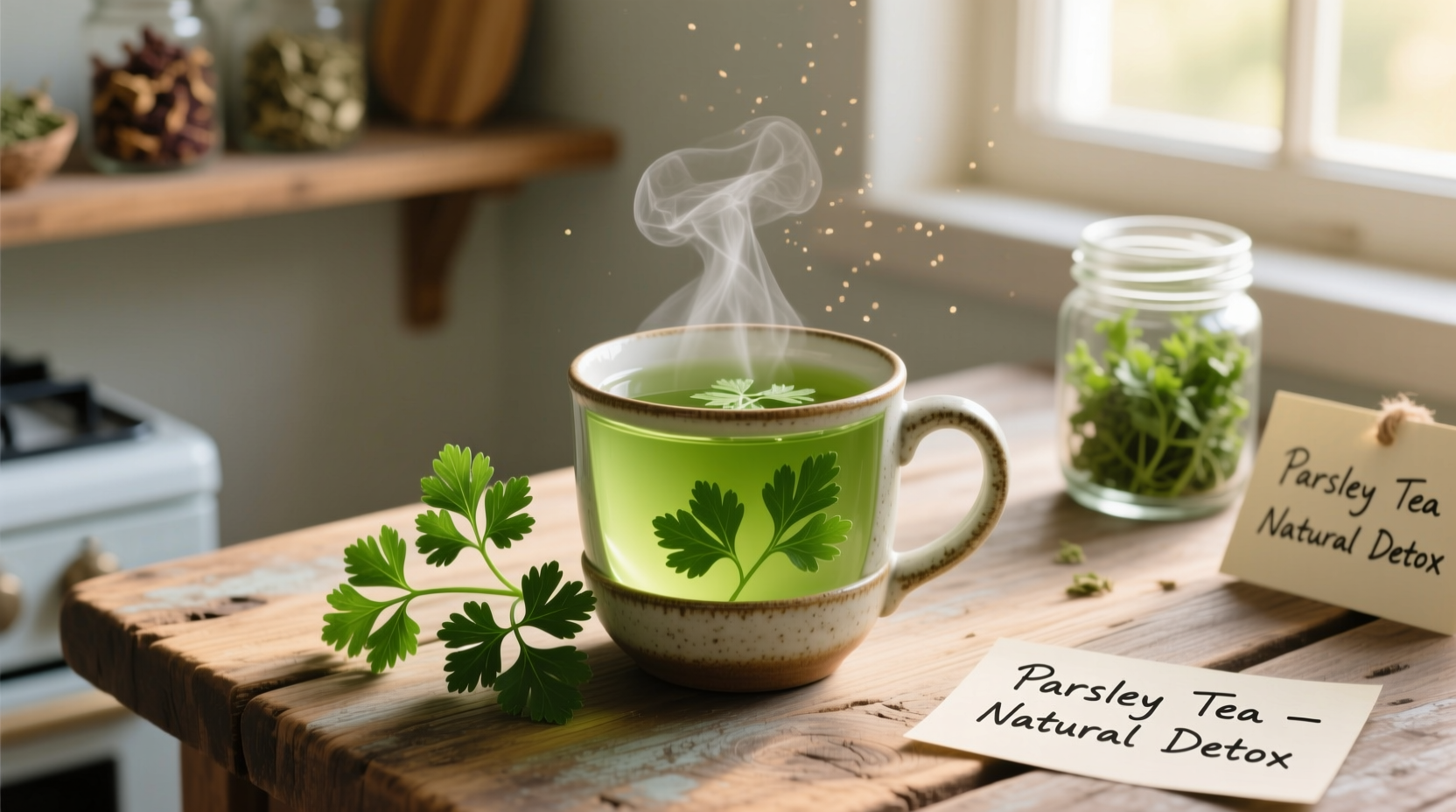Discover how to transform ordinary parsley into a revitalizing herbal tea that captures the essence of this versatile herb. Unlike store-bought versions that often contain artificial flavors, homemade parsley tea preserves the natural compounds that make this kitchen staple valuable. Chefs and herbalists agree that proper preparation technique significantly impacts both flavor profile and potential benefits.
Why Parsley Tea Deserves a Place in Your Daily Routine
Parsley isn't just a garnish—it's a nutritional powerhouse containing vitamins A, C, and K along with essential minerals. According to the USDA FoodData Central, a quarter cup of fresh parsley provides more than 20% of your daily vitamin C requirement. When properly steeped, these nutrients transfer into your tea, creating a beverage that complements a balanced diet.
| Nutrient | Amount per Cup | Daily Value % |
|---|---|---|
| Vitamin K | 300 mcg | 250% |
| Vitamin C | 15 mg | 17% |
| Vitamin A | 1,200 IU | 24% |
| Folate | 30 mcg | 8% |
Step-by-Step Preparation Guide
Follow these professional chef-tested techniques to create perfectly balanced parsley tea every time:
- Select fresh ingredients: Choose vibrant green parsley with crisp stems. Curly parsley offers a milder flavor while Italian flat-leaf provides a more robust herbal note.
- Proper preparation: Rinse thoroughly under cold water, then gently pat dry. Remove leaves from stems (stems can create bitterness if over-steeped).
- Water temperature matters: Bring filtered water to a rolling boil, then let it rest for 30 seconds to reach optimal 200°F (93°C) temperature.
- Correct steeping ratio: Use 1–2 tablespoons fresh parsley per cup of water. Adjust based on your preferred strength.
- Timing is crucial: Steep for 5–7 minutes. Longer steeping creates bitterness as volatile compounds break down.
- Strain properly: Remove leaves immediately after steeping to prevent over-extraction.

Enhancing Your Parsley Tea Experience
Elevate your basic parsley tea with these chef-approved variations that maintain the herb's delicate flavor profile:
- Lemon-Parsley Detox: Add a thin slice of organic lemon during the last 2 minutes of steeping for bright citrus notes that complement parsley's earthiness
- Ginger-Parsley Boost: Include 3 thin slices of fresh ginger root for added warmth and digestive benefits
- Mint-Parsley Cooler: Combine with 5 fresh mint leaves for a refreshing afternoon beverage
- Honey-Sweetened Version: Stir in raw honey after steeping (never before, as high heat destroys beneficial enzymes)
Storage and Serving Recommendations
For optimal freshness and flavor retention:
- Consume immediately for best taste and nutrient preservation
- If storing, keep in airtight glass container in refrigerator for up to 24 hours
- Reheat gently without boiling to preserve delicate compounds
- Serve in pre-warmed ceramic or glass cups to maintain temperature
- Enjoy warm in morning or afternoon—avoid evening consumption due to natural diuretic properties
Safety Considerations and Limitations
While parsley tea is generally safe for most adults, certain considerations apply:
- Limited consumption recommended during pregnancy (consult healthcare provider)
- Those taking blood thinners should monitor intake due to vitamin K content
- Maximum recommended daily intake: 2–3 cups for most adults
- Discontinue use if experiencing unusual side effects
- Always use culinary-grade parsley, not ornamental varieties
The U.S. Food and Drug Administration confirms that culinary herbs like parsley are generally recognized as safe (GRAS) when consumed in typical food amounts. However, they note that concentrated herbal preparations may interact with certain medications.
Troubleshooting Common Parsley Tea Issues
Fix these frequent preparation problems with professional solutions:
- Bitter tea: Reduce steeping time to 4–5 minutes and ensure water isn't boiling when added
- Weak flavor: Use slightly more parsley or choose Italian flat-leaf variety for stronger taste
- Muddy appearance: Strain through fine mesh sieve to remove small leaf particles
- Quick flavor loss: Store in amber glass container away from light to preserve volatile compounds
Frequently Asked Questions
How often can I safely drink parsley tea?
Most adults can safely enjoy 1–2 cups of parsley tea daily. The National Institutes of Health recommends not exceeding 3 cups per day for extended periods. Those with kidney conditions or on blood thinners should consult their healthcare provider before regular consumption.
Can I use dried parsley instead of fresh for tea?
Yes, but fresh parsley produces superior flavor and higher nutrient content. If using dried parsley, reduce the amount to 1–2 teaspoons per cup as dried herbs are more concentrated. Note that dried parsley loses volatile compounds more quickly, resulting in less aromatic tea.
What's the best time of day to drink parsley tea?
Morning or early afternoon is ideal due to parsley's natural diuretic properties. Avoid evening consumption as it may disrupt sleep patterns. Many herbalists recommend drinking parsley tea 20–30 minutes before meals to support digestion, but those with sensitive stomachs may prefer after eating.
How long does fresh parsley stay potent for tea making?
Fresh parsley maintains optimal tea-making quality for 3–5 days when stored properly. Keep stems in a glass of water covered loosely with a plastic bag in the refrigerator. After 5 days, the volatile oils that create parsley's distinctive flavor begin to degrade significantly, resulting in weaker tea.
Can children drink parsley tea?
Children over age 6 can occasionally enjoy small amounts (1/4–1/2 cup) of weak parsley tea. However, the American Academy of Pediatrics recommends consulting a pediatrician before introducing herbal teas to children's diets, especially for regular consumption. For younger children, milder herbs like chamomile are generally preferred.











 浙公网安备
33010002000092号
浙公网安备
33010002000092号 浙B2-20120091-4
浙B2-20120091-4